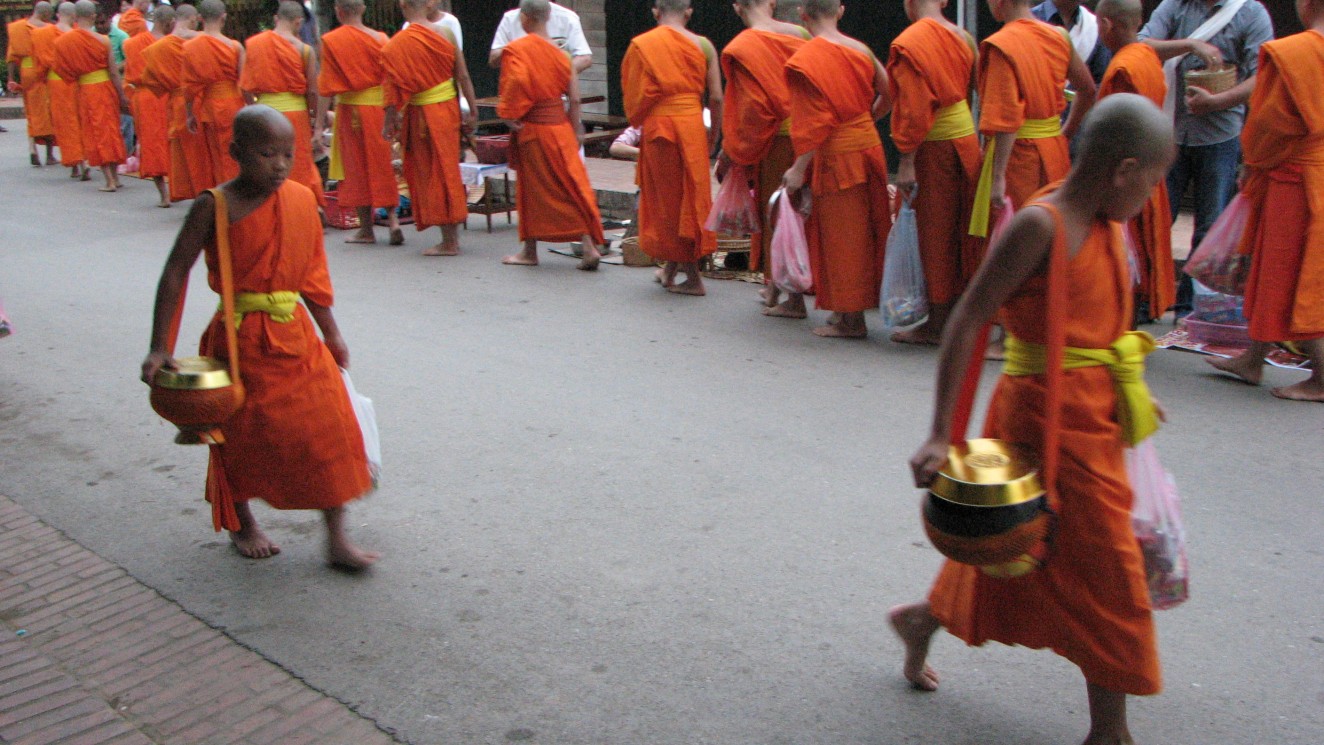China and Laos (6-Week Sample Itinerary)
The following is a sample itinerary based on past courses; actual itineraries may vary.
| Week 1 Kunming & Jizu Shan, China | Our journey begins in Kunming, Yunnan’s capital and China’s “City of Eternal Spring.” After a brief orientation in the spectacular Western Hills, we make our way into Himalayan foothills and follow the Mekong south through remote cathedral towns surrounded by vineyards and snow-capped peaks to the foothills of the Himalaya — passing reservoirs, ethnic villages and new mega-dam projects along the way. We hike to the top of Jizu Shan and sleep in the monastic retreats for pilgrims overlooking Er Hai lake and Dali. |
|---|---|
| Week 2 Southern Yunnan, China | From Dali we make our way south through Weishan where we begin learning about the Tea and Horse Caravan routes that connected Southeast Asia, Yunnanese kingdoms and Tibet for millennia. Here we learn about mushroom harvesting and ethnic belief systems of the local Yi and Dai ethnic minorities, while learning survival Mandarin and gaining insight into the increasingly busy trans-national trade routes between southern China and Southeast Asia. We travel through Muslim lands and learn about the animist Wa peoples, and have a chance to practice taiqi with Daoist monks. |
| Week 3 Xishuangbanna, China | Ultimately we arrive in Xishuangbanna, the frontier of China and Southeast Asia. The southern most prefecture in China, which shares a border with Myanmar and Laos, Xishuangbanna marks the beginning of the Lower Mekong, where the river widens and rice paddies line its banks. The area is among the most diverse and populous minority regions of China. Here we settle into a village-stay in the tropical highlands and get our first glimpse of Theravada Buddhism as well as tea and rice growing culture. Xishuangbanna has experienced monumental growth in the sectors of tourism and development investment in the last decade and, while picturesque, it has become almost unrecognizable from the predominantly ethnic Dai sleepy town. |
| Week 4 Luang Namtha, Laos | Upon leaving our homestay, we cross the border from China to Laos and feel the pace of life slow. We make our way to Luang Namtha, one of the jewels of the Golden Triangle. Here we make our into the jungles on a multi-day trek, passing through ethnic Khmu villages and sleeping in bamboo bungalows. We move west toward the Mekong and take a two-day boat ride south from Huayxay to Pak Beng, where we sleep on the banks of the river, to Luang Prabang, the cultural capital of northern Laos. |
| Week 5 Luang Prabang, Laos | Here we cross the Mekong to the live with artisan families on in Ban Chane. The week-long homestay offers a more profound introduction to the river’s meaning in everyday life and the contours of Laos history and culture. Famous for its Buddhist temples, French colonial architecture and candle-lit wonders, Luang Prabang provides a poignant setting for sinking into studies of meditation and mindfulness, artistic traditions and ecotourism. |
| Week 6 Vientiane, Laos | From Luang Prabang, we head south to Vientiane, Laos’ quaint “capital-village,” constructed with an array of medieval temples, French colonial architecture, socialist monuments and 21st century construction projects. Vientiane is the perfect place to understand the interplay between modernization efforts and traditional values. We visit NGOs working on hydroelectric “battery” projects aimed at generating dozens of proposed dams in the next decade and intended to drive the next phase of Southeast Asian development. We also delve into the US’ Secret War (1964-1973) and the impact it’s had on both rural and urban development before finishing the journey on the banks of the Mekong river. |

